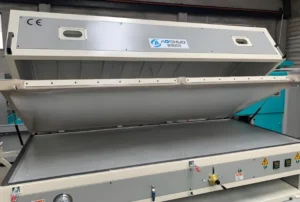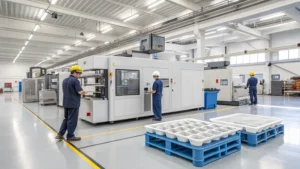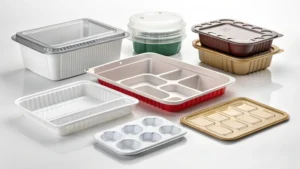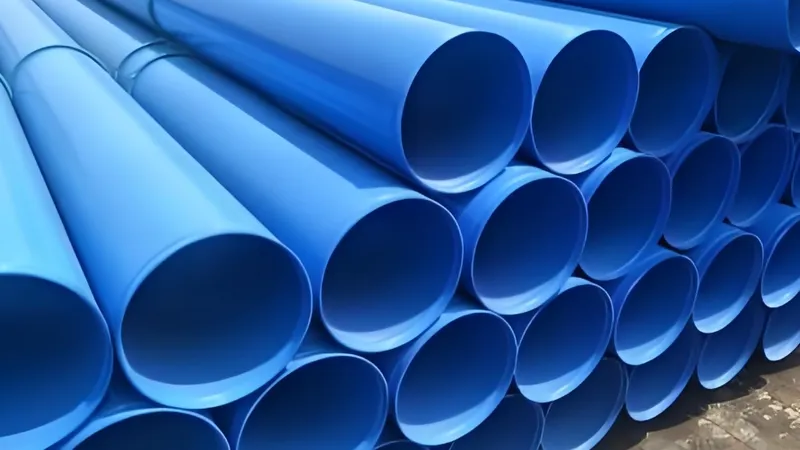
Plastic pipe extrusion often encounters challenges that can affect product quality and efficiency. Identifying and resolving these issues ensures optimal production and performance.
Optimize temperature, maintenance, and calibration to address plastic pipe extrusion issues, ensuring quality through proactive monitoring and process adjustments.
Understanding these common challenges and their solutions is crucial for maintaining efficiency in plastic pipe production. Read on to explore specific strategies and preventative measures to boost your manufacturing outcomes.
Achieving uniform wall thickness ensures higher quality plastic pipes.True
Uniform wall thickness prevents weak spots, enhancing the pipe's structural integrity and performance.
All surface defects in plastic pipes are unavoidable.False
While some defects may occur, most can be minimized with proper temperature control, material selection, and equipment maintenance.
- 1. What are the Reasons for the Uneven Wall Thickness of Plastic Pipe Extrusion and the Solution?
- 2. What are the Reasons for Plastic Pipe Extrusion Bending and the Solution?
- 3. What are the Reasons for the Uneven Surface of Plastic Pipe Extrusion and the Solution?
- 4. What are the Causes and Solutions for Scratches on the Extruded Surface of Plastic Pipes?
- 5. Conclusion
What are the Reasons for the Uneven Wall Thickness of Plastic Pipe Extrusion and the Solution?
Uneven wall thickness in plastic pipe extrusion can compromise product quality and lead to operational inefficiencies, making it crucial to address the underlying issues.
Ensure consistent die temperature, use quality resin, and maintain equipment precision to address uneven wall thickness in plastic pipe extrusion.

Inaccurate Positioning of the Die Plate
Due to the inaccurate placement of the template in the die head, the gap between the mouth and the mold is not even, causing the level of the Balas effect to be uneven, resulting in the thickness of the pipe being uneven after cooling.
- Preventive measures: line up the positioning pin between the templates, and adjust the gap between the mouth mold.
Short Molding Length of the Mouth Mold
The clarity of the molding length of the mouth die is important for the extruder head design program. For different pipes, the molding length is used to adjust the speed so that the flow of material in and out of the mouth is well proportioned. Otherwise, the pipe may have uneven thickness and wrinkles.
- Preventive measures: slightly increase the length of the mouth mold.
Mouth Mold Damage is Not Proportional
The mouth mold is the part of the mold that comes into direct contact with the material being molded, and it is subject to damage and corrosion. The mouth mold often sustains disproportionate damage because the material flow rate, total flow, wall pressure, and resistance are different in different parts of the mouth mold and the manifold cone. The plastic is molded in the mouth to achieve the desired appearance and dimensions. Therefore, damage to the mouth mold will immediately result in uneven wall thickness.
- Preventive measures: use the “flow reduction and flow increase” method to fix the gap in the orifice mold plate or the angle of the diversion cone.

Uneven Heating of the Die Head
If the heating plate or heating ring of the mold head doesn't heat evenly, the polymer solutes in the mold head won't have the same thickness when they cool down.
- Preventive measures: adjust the temperature of the heating plate or heating ring. Optimize the configuration of equipment, equipment performance and precision is also an important factor affecting the uniformity of the wall thickness of plastic pipe. In order to improve production efficiency and product quality, we should choose stable performance and high precision production equipment. At the same time, regular maintenance and repair of equipment to ensure that the equipment is in good working condition. In addition, the introduction of automated equipment can be considered to reduce human error and improve the stability and controllability of the production process.
Material with Residues Blocking the Flow Channel
When the flow channel is blocked, the flow rate of the mouth mold inlet and outlet is not proportional, the material is not stable, and the wall thickness of the pipe is not proportional.
- Preventive measures: pay attention to the cleanliness of raw materials and remove the residue in the die head runner.
Improper Selection of Raw Materials
The selection of raw materials for plastic pipe will also affect the uniformity of the pipe wall thickness. If the quality of the raw materials used is not stable, or the ratio of raw materials is not reasonable, it will also lead to inconsistent thickness of the inner and outer walls of the pipe. In addition, different raw materials melting point, fluidity and other characteristics will also affect the distribution of the thickness of the inner and outer walls of the pipe.
- Preventive measures: when we make our products, we need to make sure they’re good. We need to control the quality. First, we need to control the quality of the stuff we use to make our products. Second, we need to watch the quality while we’re making our products. We need to find and fix problems like walls that are too thick or too thin. Finally, we need to test our finished products to make sure they’re good enough. We need to make sure they’re good enough for the rules and good enough for our customers.
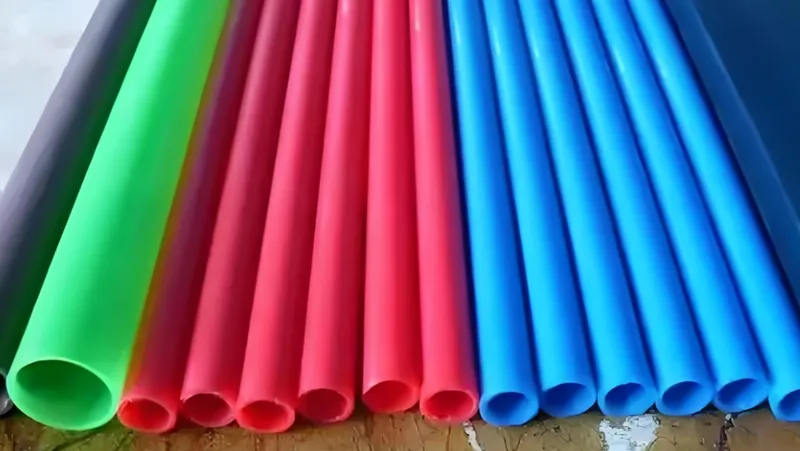
Plastic Pipe Manufacturing Process
The manufacturing process of plastic pipe is one of the important factors affecting the uniformity of pipe wall thickness. In the plastic pipe manufacturing process, if the mold is not reasonably designed or improperly operated, it will lead to inconsistent thickness of the inner and outer walls of the pipe.
In addition, plastic pipe extruder temperature1, inner and outer diameter ratio, extrusion speed and other parameters will also affect the thickness distribution of the inner and outer walls of the pipe, resulting in uneven wall thickness of the pipe.
-
Preventive measures: optimize the mold design2.
-
Mold design is unreasonable or improper operation: mold design is unreasonable or improper operation will lead to uneven pipe wall thickness inside and outside. The design of the mold should ensure that the cooling and heating of each part is uniform to avoid uneven wall thickness due to uneven temperature.
-
Preventive measures: adjust the wall thickness adjusting bolts around the mold , Ensure the uniformity of the pipe wall thickness by adjusting the wall thickness adjusting bolts.
-
Improper setting of parameters such as extruder temperature, inner and outer diameter ratio, extrusion speed, etc : the setting of these parameters directly affects the extrusion process of the pipe, if these parameters are not set properly, it will lead to uneven distribution of the thickness of the inner and outer walls of the pipe. For example, the extruder temperature is too high or too low will affect the fluidity of the plastic, which in turn affects the wall thickness of the pipe.

-
Preventive measures: adjust the production process parameters; the setting of the production process parameters has a crucial impact on the wall thickness uniformity of the plastic pipe. Therefore, we need to adjust the temperature, pressure and speed of the extruder according to the actual situation, in order to ensure that the plastic can be evenly distributed in the extrusion process. In addition, we should also regularly check the wear and tear of the mold and replace the damaged mold in time to avoid uneven wall thickness caused by mold problems.
-
Cooling system problems: the cooling system3 design is not reasonable or uneven cooling can also lead to uneven wall thickness of the pipe. Uneven distribution of cooling water will make the pipe shrink inconsistently during the cooling process, resulting in uneven wall thickness.
-
Preventive measures: regularly check the cooling water distribution4. Make sure the cooling water distribution is even, and adjust any uneven cooling water distribution as needed.
-
Uneven gap of the mouth mold: the mouth mold is the key component for forming the surface of the pipe. If the gap of the mouth mold is uneven, it will lead to uneven wall thickness of the pipe. Correcting the positioning pin between the templates and adjusting the gap between the mouth mold is one of the ways to solve this problem.
-
Preventive measures: fix the positioning pin between the templates. Fix the positioning pin between the templates, adjust the gap between the mouth mold to ensure uniformity of the gap between the mouth mold.

-
Uneven heating: if the heating plate or heating ring of the mold head is not evenly heated, the viscosity of the polymer solution in different parts of the mold head will be different, resulting in uneven wall thickness after cooling.
-
Preventive measures: adjust the temperature of the heating plate or heating ring.
Uneven or Insufficient Cooling
If the pipe cools unevenly, it will shrink unevenly and bend.
- Preventive measures: check the cooling water circuit: Check if the cooling water circuit is smooth and adjust the cooling water flow rate. Lower the cooling water temperature to make sure it’s appropriate and the flow rate is even to avoid uneven cooling.
Unconstant Traction Speed
The speed of the unsynchronized traction machine is not constant, which will cause the molten material to be coarse and fine uneven, and the cooling shrinkage will cause bending.
- Preventive measures: overhaul the traction machine: overhaul the traction machine and adjust the traction speed. Ensure that the traction machine synchronization, constant speed, to avoid uneven wall thickness caused by uneven traction speed.
Temperature fluctuations in the die can cause uneven wall thickness in plastic extrusion.True
Temperature variations affect resin flow, leading to inconsistencies in wall thickness.
All uneven wall thickness issues are caused by poor resin quality.False
While resin quality can impact wall uniformity, factors like extrusion speed and die settings also play a significant role.
What are the Reasons for Plastic Pipe Extrusion Bending and the Solution?
Plastic pipe extrusion bending can lead to defects, impacting quality and functionality. Identifying causes and implementing effective solutions are crucial for optimal production processes.
Plastic pipe bending in extrusion is due to uneven cooling, poor die design, or flow issues; solutions involve cooling adjustments, die optimization, and consistent material flow.

Uneven Cooling or Insufficient Cooling
When the molten material flows out of the mold, it is cooled and shaped by heat exchange and vacuum suction. If the cooling of the pipe parts is not uniform, the different cooling speeds of the parts will cause the pipe to bend. Or when the pipe is taken out of the shaping mold and the shaping water tank, if the temperature of a part is still high and not completely cooled, the bending of the pipe will still occur due to the cooling of the part.
- Preventive measures: lower the cooling water temperature, check for smooth cooling water flow, adjust the overall cooling water flow, increase or block the water hole.
Shaping Mold Resistance all Over the Disproportionate
If the molten material in the mold solidifies and shrinks, it will create resistance. If the resistance is too great, it will cause the pipe to bend because the resistance is not consistent throughout the pipe.
- Preventive measures: fix the mold, increase or decrease the resistance.
Unstable Traction Speed
The traction machine is not synchronized, the speed is not stable, which causes the thickness of the molten material to be uneven, and the bending of the refrigeration collection.
- Preventive measures: fix the traction machine, adjust the traction speed.
Uneven cooling causes pipe extrusion bending.True
Inconsistent cooling can lead to uneven wall thickness and deformation, causing the pipe to bend.
Correcting die design never helps reduce extrusion bending.False
Optimizing die design can ensure even material flow, reducing the likelihood of bending during extrusion.
What are the Reasons for the Uneven Surface of Plastic Pipe Extrusion and the Solution?
Uneven surfaces in plastic pipe extrusion compromise product quality and performance, affecting applications across various industries.
Optimize temperature, calibrate dies precisely, and use high-quality materials to ensure consistent surfaces in plastic pipe extrusion.

Insufficient Cooling
Because the pipe’s different parts aren’t cooled enough, the different parts cool at different rates, which makes the stereotypes uneven, which makes the product’s surface not flat.
- Countermeasures: dredge the waterway, increase the water hole, increase the flow rate.
Insufficient Vacuum The plastic pipe’s geometric shape and dimensional accuracy are controlled by the sizing mold. After the pipe leaves the mold head, it sags quite a bit due to its own weight. Once it enters the shaping mold, it is sucked onto the shaping mold cavity by the vacuum adsorption force. If the vacuum is not enough, the material does not fully connect with the cavity, which will cause the pipe’s surface to be uneven.
- Countermeasures: check the seal, clear the airway, and improve the vacuum.
Too Fast Traction Speed
Haul-off speed is too fast, inconsistent with extrusion speed, billet stretch ratio is too large, surface is not flat after cooling.
- Countermeasures: adjust the traction speed appropriately.

Raw Material Quality
-
Poor fluidity: if the fluidity of the material is poor, it will cause uneven surfaces during the extrusion process. The fluidity of EPDM material can be measured by the Menni viscosity test5, and the ideal viscosity range is usually between 50-70. If the Mooney viscosity is too high, the material will have poor fluidity and will cause uneven surfaces during extrusion.
-
Poor dispersion6: the surface quality of the product can be affected if the fillers or plasticizers are not evenly distributed in the material. You can use a scanning electron microscope (SEM) and a particle size analyzer to check the size and uniformity of the filler particles. It’s best to keep the filler particle size between 0.5 and 1 micron and make sure the distribution is even.
-
Countermeasure: tweak the raw material ratio: Adjust the ratio of plasticizers or fillers to make sure the Menni viscosity is between 50 and 70.
Extrusion Process Parameters
-
Uneven temperature distribution7: keep the extrusion temperature between 100-110°C. If the temperature isn’t even, the surface won’t be even. You can check this with thermocouples and temperature sensors and adjust the heating section settings based on what you find.
-
Unstable pressure: keep the extrusion pressure between 8 and 12 MPa. If the pressure isn’t steady, the material won’t flow evenly, and that’ll mess up the surface. You can use pressure sensors to watch for pressure changes while you’re working.

-
Mismatch between extrusion speed and cooling effect: the extrusion speed should match the cooling effect. Typically, the extrusion speed is between 15 and 30 meters per minute. The meter weight has a small standard deviation, and the roughness value is low.
-
Countermeasure: optimize the extrusion process parameters: keep the temperature and pressure stable, adjust the extrusion speed and cooling effect to ensure that each parameter is within the ideal range.
Equipment Maintenance and Monitoring
-
Screw torque monitoring: screw torque is a key indicator to evaluate the health of the equipment. The normal range is 450 Nm. If it wears out, it needs maintenance.
-
Mold surface roughness8: the roughness of the mold surface directly affects the surface quality of the product. The recommended range is an Ra value of 0.2-0.5 μm. If it is higher than 0.6 μm, it needs to be polished. If it is higher than 0.8 μm, it is recommended to replace it.
-
Countermeasures: equipment Maintenance and Monitoring: Regularly check the screw torque and mold surface roughness. If necessary, maintain or replace them.
Proper temperature control can prevent uneven surfaces in plastic pipe extrusion.True
Maintaining consistent temperatures throughout the extrusion process helps ensure uniform flow and solidification, preventing surface irregularities.
All plastic pipe extrusion issues are caused by faulty equipment.False
While equipment can contribute to issues, factors like raw material quality and process settings are equally important in preventing surface irregularities.
What are the Causes and Solutions for Scratches on the Extruded Surface of Plastic Pipes?
Scratches on extruded plastic pipes can compromise product quality and durability, affecting their performance in various applications.
Optimize extrusion, apply protective coatings, and maintain clean environments to prevent scratches on plastic pipes and enhance durability.

Mold Problems
If there are impurities or foreign objects on the extrusion mold or sizing die, it will cause scratches on the surface of the plastic pipe. For example, if there is sand or foreign matter attached to the sizing sleeve, support plate or sealing ring, it will affect the surface quality of the pipe.
- Countermeasures: scrub the mold: Keep the sizing sleeve, support plate, and sealing ring clean by scrubbing off any sand, gravel, or other debris. Make sure the mold is clean. This will help prevent scratches.
Cooling Sizing Mold Problems
If there are impurities or foreign matter in the cooling sizing mold, it can cause scratches on the surface of the pipe. You can check and clean the impurities by separating the shaping mold from the head mold and looking at it from a distance.
- Countermeasures: inspect and clean the impurities: Inspect the extruder and sizing dies and clean the impurities in them to ensure they are working properly and to prevent scratches caused by equipment problems. Regularly inspect and maintain the extruder and mold, and control the quality of materials: make sure there are no impurities and foreign materials in the materials to prevent scratches caused by material problems.
Impurities in the extrusion process lead to scratches on plastic pipes.True
Contaminants or improper extrusion settings can cause surface imperfections, impacting the final product quality.
All scratches on plastic pipes are caused by handling errors.False
While handling can cause scratches, they also arise from process-related issues like improper extrusion parameters or environmental contaminants.
Conclusion
Uneven wall thickness, bending, uneven surface and scratches, which are common in the extrusion process of plastic pipes, are mostly caused by improper mold design, uneven heating, insufficient cooling, poor material quality and unreasonable process parameters.
Solutions include calibrating the die, extending the die forming length, optimizing the heating and cooling system, cleaning the die and runners, optimizing the raw material ratios and production process parameters, as well as ensuring equipment maintenance and monitoring to ensure product quality and production stability.
-
Extruder temperature plays a vital role in the quality of plastic pipes. Learn more about its impact to optimize your production process. ↩
-
Understanding mold design is crucial for ensuring uniform wall thickness in plastic pipes. Explore this resource to enhance your knowledge. ↩
-
A well-designed cooling system is essential for uniform wall thickness. Discover effective designs to improve your manufacturing process. ↩
-
Explore this resource to learn effective techniques for maintaining uniform cooling water distribution, crucial for product quality. ↩
-
Understanding the Menni viscosity test can help you ensure optimal material fluidity, leading to better extrusion outcomes. ↩
-
Understanding poor dispersion can help improve product quality and consistency in plastic manufacturing. ↩
-
Exploring this topic can provide insights into optimizing extrusion processes for better surface quality. ↩
-
Learning about mold surface roughness can enhance your understanding of its critical role in achieving high-quality plastic products. ↩


